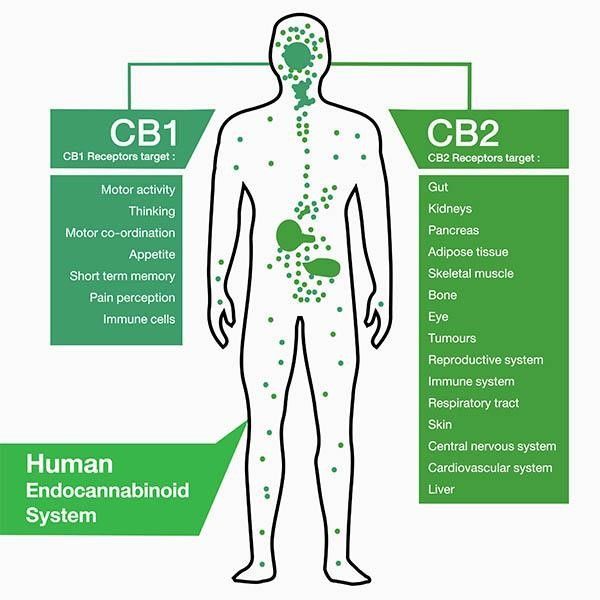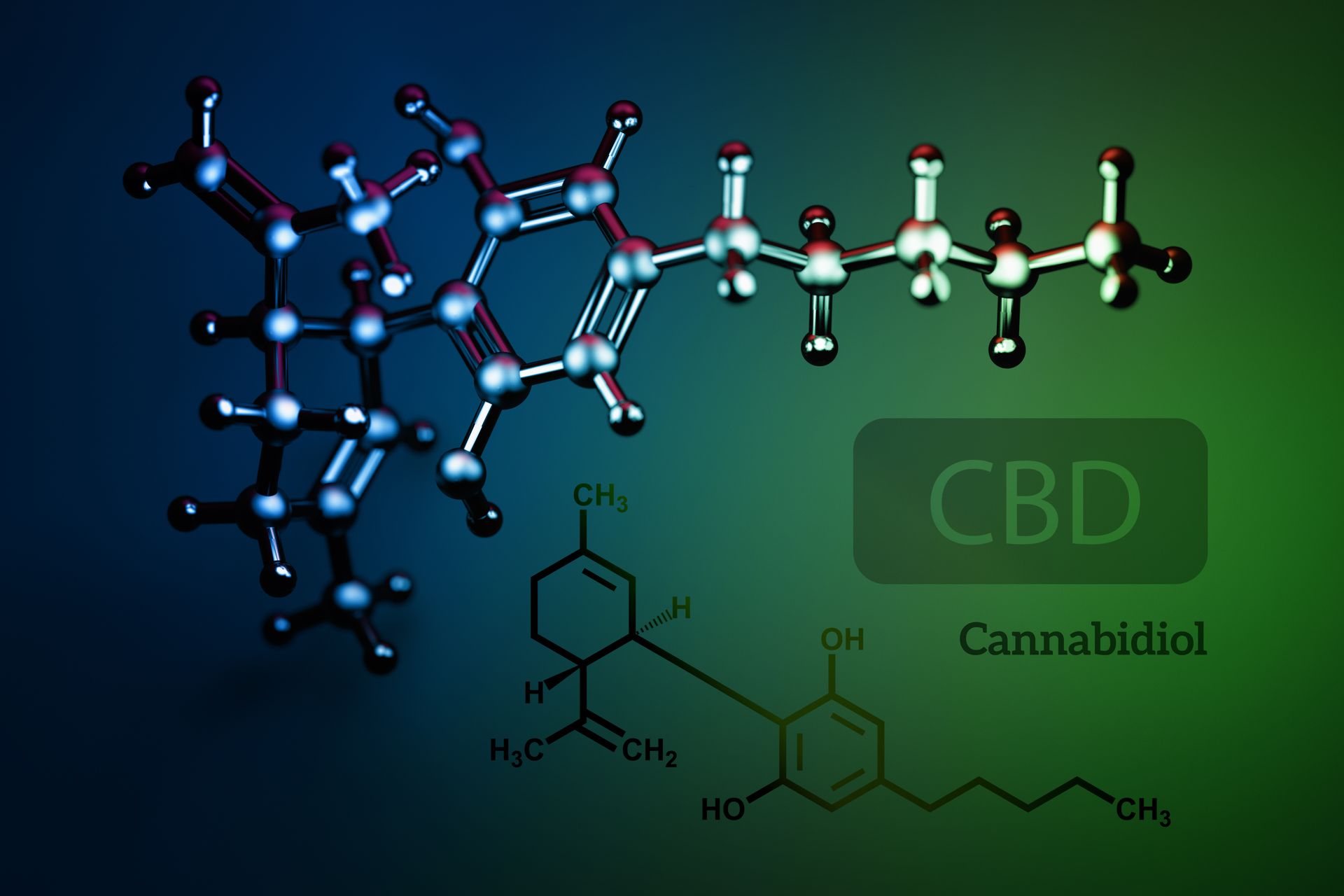Unveiling the Endocannabinoid System: Your Body's Natural Harmony Keeper
What is the Endocannabinoid System?

Unveiling the Endocannabinoid System: Your Body's Natural Harmony Keeper
Introduction
Understanding the Endocannabinoid System (ECS) is akin to deciphering a profound language spoken within our bodies. This intricate system plays a pivotal role in maintaining balance, or homeostasis, across various physiological functions. From mood regulation to immune response, the ECS orchestrates a symphony of signals that keep us in optimal health. Let's delve into this fascinating system and uncover its mysteries.
1. What is the Endocannabinoid System?
The ECS is a complex network of neurotransmitters, receptors, and enzymes that regulate numerous bodily functions, ensuring internal balance and stability, known as homeostasis.
2. A Brief History of Discovery
The ECS was first discovered in the 1990s as researchers sought to understand the effects of cannabis on the body. This led to the identification of cannabinoid receptors and endogenous cannabinoids, which are produced naturally by the body.
3. Components of the ECS
The ECS comprises three main components: endogenous cannabinoids (endocannabinoids), cannabinoid receptors, and enzymes responsible for synthesizing and degrading endocannabinoids.
4. Endogenous Cannabinoids: The Body's Internal Messengers
Endocannabinoids are molecules produced naturally by the body. The two major endocannabinoids are anandamide and 2-arachidonoylglycerol (2-AG). These molecules bind to cannabinoid receptors to regulate various physiological processes.
5. Cannabinoid Receptors: Gateways to Cellular Communication
Cannabinoid receptors, including CB1 and CB2 receptors, are located on cell membranes throughout the body. CB1 receptors are primarily found in the central nervous system, while CB2 receptors are mainly found in immune cells and peripheral tissues.
6. Enzymes: The ECS's Regulators
Enzymes such as fatty acid amide hydrolases (FAAH) and monoacylglycerol lipase (MAGL) are responsible for synthesizing and degrading endocannabinoids, thereby regulating their levels in the body.
7. Functions of the ECS
The ECS plays a key role in regulating mood, pain sensation, appetite, sleep, immune response, and inflammation, among other physiological processes.
8. Regulation of Mood and Emotion
The ECS influences mood and emotion by modulating neurotransmitter release in brain regions associated with mood regulation, such as the limbic system.
9. Pain Management: A Natural Analgesic System
Endocannabinoids play a crucial role in regulating pain perception, with therapeutic potential in managing both chronic and acute pain conditions.
10. Appetite Control and Metabolism
The ECS regulates appetite and metabolism, with implications for conditions such as obesity and eating disorders.
11. Sleep Regulation: Finding Balance
Endocannabinoids help regulate sleep-wake cycles and promote overall sleep quality.
12. Immune Response and Inflammation
The ECS modulates immune cell function and inflammatory processes, contributing to immune homeostasis and tissue repair.
13. Neuroprotection: Safeguarding Brain Health
Endocannabinoids have neuroprotective properties and may help mitigate neuronal damage in neurological disorders.
14. The ECS and Stress Response
The ECS is involved in the body's response to stress, with implications for stress-related disorders such as anxiety and depression.
15. How Does the ECS Work?
Endocannabinoids are synthesized on demand in response to cellular cues and act as retrograde neurotransmitters, modulating neurotransmitter release at synapses.
16. Endocannabinoid Synthesis and Release
Endocannabinoids are synthesized from membrane phospholipids and released from postsynaptic neurons in response to depolarization.
17. Receptor Activation: Triggering Cellular Responses
Upon release, endocannabinoids bind to cannabinoid receptors on presynaptic neurons, inhibiting neurotransmitter release and modulating cellular signaling pathways.
18. Endocannabinoid Breakdown: Maintaining Equilibrium
After exerting their effects, endocannabinoids are rapidly metabolized by enzymes such as FAAH and MAGL to maintain homeostasis.
19. The Role of Phytocannabinoids
Phytocannabinoids, compounds found in cannabis, mimic the effects of endocannabinoids and can interact with cannabinoid receptors to produce therapeutic effects.
20. Plant Allies: Cannabis and Beyond
Cannabis contains over 100 different phytocannabinoids, each with unique effects and therapeutic potential. Research into other plant-derived cannabinoids is ongoing.
21. Clinical Implications: ECS and Health Conditions
The ECS represents a promising target for the treatment of various health conditions, including pain, inflammation, neurological disorders, and psychiatric disorders.
22. ECS Dysregulation: Understanding Imbalance
Dysregulation of the ECS has been implicated in various pathological conditions, highlighting the importance of maintaining ECS activity within optimal levels.
23. Harnessing the Power of the ECS: Therapeutic Potential
Therapeutic interventions targeting the ECS, such as cannabinoid-based medications, hold promise for managing a wide range of health conditions.
24. Lifestyle Factors Influencing the ECS
Various lifestyle factors, including diet, exercise, stress management, and sleep hygiene, can influence ECS activity and overall health.
25. Supporting Your ECS Naturally
Adopting a healthy lifestyle that supports ECS function can promote overall well-being and vitality.
26. Future Studies: Exploring New Frontiers
Ongoing research into the ECS continues to uncover new insights into its role in health and disease, paving the way for novel therapeutic approaches.
27. Key Role in Human Health
The ECS plays a critical role in maintaining physiological balance and has implications for overall health and well-being.
28. Therapeutic Targets and Potential
Targeting the ECS holds promise for the development of novel therapies for various medical conditions, with fewer adverse effects compared to conventional treatments.
29. Adverse Effects and Safety Considerations
While cannabinoids have therapeutic potential, they may also be associated with adverse effects, highlighting the importance of careful monitoring and dose optimization.
Conclusion: Embracing the Potential of the ECS
As we unravel the complexities of the ECS, we gain insights into its profound influence on human health and well-being. By understanding and harnessing the power of this intricate system, we can unlock new therapeutic avenues and promote optimal health for all. Let's embrace the potential of the ECS and continue to explore its vast possibilities in the realm of medicine and beyond.
Servant's Heart Natural Well-Being Products
Please visit Servant's Heart Products (servantsheartglobal.com) for all-natural, affordable, high quality, and potent CBD products, including gummies and topical.
Additional Resources About CBD
https://www.ncbi.nlm.nih.gov/pmc/articles/PMC5877694/
https://www.health.harvard.edu/blog/the-endocannabinoid-system-essential-and-mysterious-202108112569
https://www.health.harvard.edu/blog/the-endocannabinoid-system-essential-and-mysterious-202108112569
https://www.healthline.com/health/endocannabinoid-system
https://www.ncbi.nlm.nih.gov/pmc/articles/PMC8221009/
https://www.goodrx.com/classes/cannabinoids/what-is-the-endocannabinoid-system
https://www.medicalnewstoday.com/articles/endocannabinoid
https://sc.edu/uofsc/posts/2023/02/conversation_marijuana.php
https://www.everydayhealth.com/marijuana/endocannabinoid-system/
https://adf.org.au/drug-facts/cannabinoids/
https://honahlee.com.au/articles/endocannabinoid-system-explained/
https://www.nature.com/articles/s41401-019-0210-3
https://www.sciencedirect.com/topics/medicine-and-dentistry/endocannabinoid-system
https://en.wikipedia.org/wiki/Endocannabinoid_system
https://emedicine.medscape.com/article/1361971-overview
https://www.sciencedirect.com/topics/neuroscience/endocannabinoid
https://doi.org/10.2174/1381612820666140130212957
https://doi.org/10.1097%2FCU9.0000000000000023
https://doi.org/10.3389/fpls.2016.00019
https://doi.org/10.1300/J175v02n01_04
https://doi.org/10.1038/sj.bjp.0706406
https://doi.org/10.1016/j.tips.2015.02.008
https://doi.org/10.1111%2Ffebs.12260
https://doi.org/10.1016%2Fj.phrs.2009.03.019
https://doi.org/10.1016%2Fj.phrs.2009.03.019
https://doi.org/10.1016/j.phrs.2009.03.019
https://doi.org/10.3390%2Fijms19030833
https://doi.org/10.4155/fmc.09.93
https://doi.org/10.1146%2Fannurev-neuro-070815-014038
https://doi.org/10.1038/sj.bjp.0707442
https://doi.org/10.1038/npp.2017.130
https://doi.org/10.1021%2Fcr0782067
https://doi.org/10.3390/ijms22179472
https://doi.org/10.1002/eji.201546181
https://doi.org/10.1124/mol.108.047035
https://doi.org/10.1089/can.2016.0009
https://doi.org/10.1038/s41467-022-31168-9
https://doi.org/10.1093/brain/awac223
https://doi.org/10.1371/journal.pone.0187926
https://doi.org/10.3390/molecules27144662
https://doi.org/s41401-018-0032-8
https://doi.org/s41401-018-0071-1
https://doi.org/s41401-018-0031-9
https://doi.org/s41401-018-0075-x
https://doi.org/s41401-018-0059-x
https://doi.org/s41401-018-0164-x
https://doi.org/s41401-018-0152-1
https://doi.org/s41401-018-0037-3
https://doi.org/s41401-018-0074-y
https://doi.org/s41401-018-0035-5
https://doi.org/s41401-018-0051-5
https://doi.org/s41401-018-0081-z
https://doi.org/s41401-018-0073-z
https://doi.org/10.3390%2Fnu9111263
https://doi.org/10.1080%2F1028415X.2017.1347373
https://doi.org/10.1111%2Fj.1743-6109.2012.02708.x
https://doi.org/10.1007%2FBF02854916
https://doi.org/10.1007%2Fs12035-019-1537-y
https://doi.org/10.4103%2F1673-5374.262585
https://doi.org/10.1016%2Fj.ejphar.2004.07.033
https://doi.org/10.1016%2Fj.drudis.2016.08.005
https://doi.org/10.1038%2Fnpp.2017.204
https://doi.org/10.3389%2Ffnins.2021.747229
https://doi.org/10.1016%2Fj.plipres.2018.05.002
https://doi.org/10.31887%2FDCNS.2020.22.3%2Fvdimarzo
https://doi.org/10.1007%2Fs13311-015-0374-6
https://doi.org/10.3389%2Ffnmol.2018.00487
https://doi.org/10.1038%2Fsj.ijo.0803272
https://doi.org/10.1093%2Fcercor%2Fbhj133
https://doi.org/10.1523%2FJNEUROSCI.4842-06.2007
https://doi.org/10.1523%2FJNEUROSCI.4159-06.2007
https://doi.org/10.1523%2FJNEUROSCI.1236-06.2006
https://doi.org/10.1038%2F35071088
https://doi.org/10.1073%2Fpnas.161191698
https://doi.org/10.3389%2Ffnins.2013.00256
https://doi.org/10.3389%2Ffpsyg.2014.01506
https://doi.org/10.3389%2Ffnins.2014.00057
https://doi.org/10.1016%2Fj.bbrc.2014.02.026
https://doi.org/10.1038%2Fsj.bjp.0707442
https://doi.org/10.1098%2Frstb.2000.0787
https://doi.org/10.1038%2Fnn.2974
https://doi.org/10.1016%2Fj.jare.2013.03.008
https://doi.org/10.1016%2Fj.brainres.2015.06.011
https://doi.org/10.1074%2Fjbc.M306642200
https://doi.org/10.1073%2Fpnas.0601832103
https://doi.org/10.1016%2Fj.str.2014.12.018
https://doi.org/10.1021%2Facschembio.6b00624
https://doi.org/10.1021%2Fbi060163l
https://doi.org/10.1016%2Fj.pbb.2005.01.030
https://doi.org/10.1016%2FS0006-8993%2800%2903127-9
https://doi.org/10.1002%2Fjcb.20662
https://doi.org/10.1016%2Fj.neuropharm.2008.07.018
https://doi.org/10.1016%2Fj.neuint.2017.10.016
https://doi.org/10.1124%2Fmol.62.6.1385
https://doi.org/10.1074%2Fjbc.M602516200
https://doi.org/10.1152%2Fphysiolgenomics.2000.3.3.175
https://doi.org/10.1152%2Fjn.1997.78.1.43
https://doi.org/10.1124%2Fmol.65.3.665
https://doi.org/10.1016%2Fj.neuroscience.2006.06.020
https://doi.org/10.1152%2Fphysrev.00004.2003
https://doi.org/10.1016%2Fj.neuron.2007.05.020
https://doi.org/10.1038%2Fnature02913
https://doi.org/10.1016%2FS0024-3205%2899%2900294-5
https://doi.org/10.1016%2FS0301-0082%2800%2900031-9
https://doi.org/10.1172%2FJCI25509
https://doi.org/10.1096%2Ffj.05-3995fje
https://doi.org/10.1002%2Fhipo.20151
https://doi.org/10.1038%2Fnn832
https://doi.org/10.1146%2Fannurev.physiol.010908.163149
https://doi.org/10.2174%2F187152706777452272
https://doi.org/10.1038%2F25267
https://doi.org/10.1016%2Fj.neuropharm.2011.10.018
https://doi.org/10.1111%2Fj.1365-2826.2008.01728.x
https://doi.org/10.1073%2Fpnas.0914661107
https://doi.org/10.1371%2Fjournal.pone.0026617
https://doi.org/10.4049%2Fjimmunol.1102195
https://doi.org/10.1016%2FS0140-6736%2800%2902115-2
https://doi.org/10.1073%2Fpnas.92.10.4332
https://doi.org/10.1073%2Fpnas.92.21.9460
https://doi.org/10.2174%2F1876386301205010012
https://doi.org/10.1016%2Fj.phrs.2016.02.020
https://doi.org/10.1038%2Fsj.bjp.0705467
https://doi.org/10.1073%2Fpnas.122196999
https://doi.org/10.1016%2FS0006-8993%2898%2900969-X
https://doi.org/10.1016%2F0024-3205%2895%2902319-4
https://doi.org/10.3892%2Fijmm.2010.547
https://doi.org/10.1016%2Fj.lfs.2005.12.028
https://doi.org/10.1007%2Fs00018-014-1575-6
https://doi.org/10.1242%2Fjeb.063677
https://doi.org/10.1038%2Fsrep41177
https://doi.org/10.1093%2Faob%2Fmct067
https://doi.org/10.1186%2Fs13104-020-05372-z
https://doi.org/10.1016%2Fj.foodres.2020.109819









